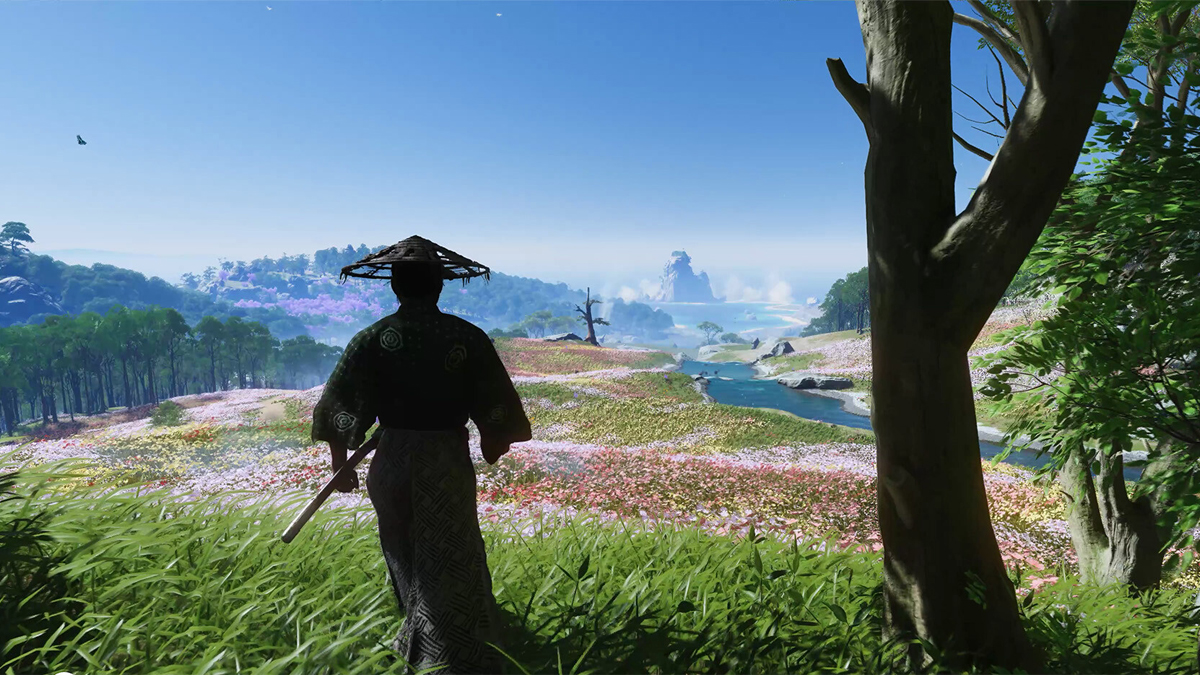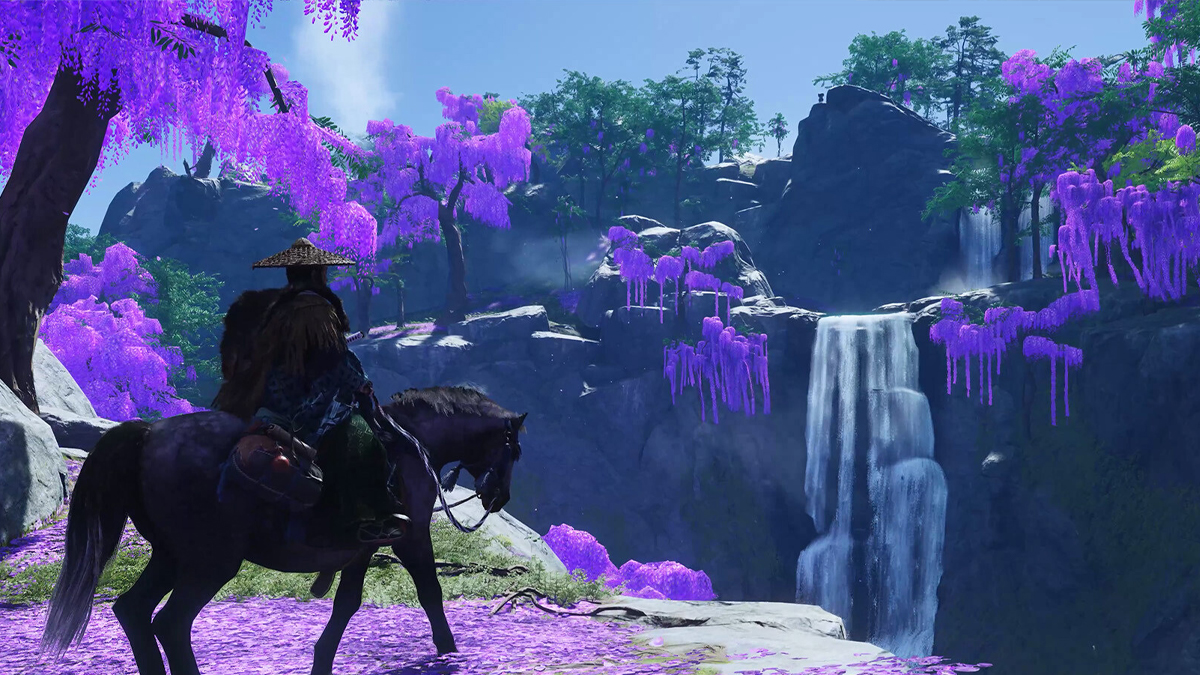
First things first. I really need to start learning how to spell “Tsushima”. I wrote about Sucker Punch’s excellent samurai sandbox a lot in my previous role before joining Tom’s Guide and every single time I had to Google the damn spelling. It’s clearly a slight defect in some quarter of my brain that’s also responsible for me constantly forgetting the titular year in Blade Runner 2049, despite Dune: Part Two director Denis Villeneuve’s masterful sci-fi sequel being one of my favorite movies of the past decade.
Anyway, Ghost of Tsushima Director’s Cut is coming to PC on May 16. Speaking as both an obsessive PC player and someone who replaced their PS4 Pro back in 2020 just to replay this open-world action-adventure — my launch model’s fans had become so loud I literally couldn’t make out a lot of the dialogue in The Last of Us Part II — I should be thrilled with this news. Instead, I’m only hesitantly hopeful it won’t be a trainwreck at launch.
It’s no secret Sony and its PlayStation brand has a spotty record since it decided to embrace the PC gaming market by releasing some of its biggest IPs on the likes of Steam.
It’s no secret Sony has a spotty record ever since it decided to embrace the PC gaming market"
The trend started four years ago when the Japanese tech giant enlisted developer Virtuous to port Horizon Zero Dawn Complete Edition to PC. In the years since, Marvel’s Spider-Man Remastered, Days Gone, God of War, Uncharted: Legacy of Thieves, Returnal and Ratchet & Clank: Rift Apart have all made the same jump from PlayStation to gaming rigs and laptops.
From a business standpoint, I think Sony is bang on the money here. It keeps its biggest franchise exclusives exactly that for a year or two before tapping into what’s undeniably a colossal gaming market. Steam alone has north of 120 million active users every month (thanks, Backlinko), and that’s just one of several major PC storefronts these former PS4 and PS5 exclusives have arrived on. For context PlayStation 5 has sold a “mere” 50 million units as of last December (cheers, GamesIndustry.biz).
While the financial thinking is sound, the actual quality of these ports has varied wildly when they initially launched on PC. Ghost of Tsushima is an excellent open-world game with sharp swordplay that encourages flowing combat in a way that reminds me of my beloved Batman: Arkham Knight. Jin Sakai’s 13th century-set tale of vengeance that plays across an eye-arousing Japanese island deserves much better treatment than Aloy received when Horizon Zero Dawn first arrived on PC.
Ghosts in the machine

Actually, that questionable play on words directly above should really be “ghosts/skeletons in the closet”, because Sony has seriously screwed the pooch with multiple PC ports in the past. Not only was Aloy’s sandbox a poorly optimized stutter-fest when it launched on Steam, but the likes of Returnal suffered from bad frame pacing — and still does, the last time I checked on my RTX 4090-powered mega rig — and that’s before we get to the cautionary tale of The Last of Us Part I’s shambolic PC launch.
Joel and Ellie’s cross-country adventure through an Infected-plagued U.S. heartland is one of my favorite games of all time, but hoo-boy did it arrive on PC in an utter state. A glitchy mess with unreasonably high VRAM requirements that played poorly on even the best gaming PCs, the port Sony primarily entrusted to Iron Galaxy Studios (with additional work from original developer Naughty Dog) was initially a meme-generating disaster. It’s thankfully now in very decent shape after a number of post-launch patches, but reputationally, I’d argue The Last of Us Part I on PC has never fully recovered.
Mercifully, there are emerging clear signs Sony is starting to learn lessons when it comes to putting PS5 games on PC. I recently finished Iron Galaxy’s port of Uncharted 4, and I can honestly say it’s the most sensationally pretty video game I’ve ever played. Really.
The jump in fidelity when playing Drake’s saga-closing quest in 4K at 120 fps (on my admittedly horribly expensive desktop) is transformationally better than the PS5 version. It looks so incredible, I’d be surprised if a single PS5 Pro game ever reaches these visual standards, if and when the rumored console launches.
Going back to the Ghost of
A promising Horizon
Both editions are being handled by porting specialists Nixxes Software and will support Nvidia’s excellent DLSS 3 upscaling, alongside the option to enable Team Green’s RTX 40-series GPU frame generation techniques. Ghost of Tsushima Director’s Cut also has AMD FSR 3 and Intel XeSS upsampling, meaning PC gamers who own Radeon graphics cards or the latest Intel Meteor Lake laptops should also benefit from these fps-boosting features.
Hopefully the PC version of Tsushima will play a treat on the best curved monitors"
Even more impressively, the PlayStation Blog claims Jin’s gorgeous samurai slasher will be “fully optimized for 21:9 and 32:9 resolutions and even supports 48:9 resolutions for triple monitor setups”. As someone who owns the superb 32:9 aspect ratio Samsung Odyssey OLED G9 gaming monitor, this is heartening news when so many developers continue to deliver subpar ultrawide and super ultrawide experiences. Hopefully the PC version of Tsushima will play a treat on the best curved monitors.
So it seems like there’s real cause for optimism in regards to the next couple of PS5 ports headed to PC. Yet forgive me if I remain slightly cynical until I’ve played both Ghost of Tsushima Director’s Cut and Horizon Forbidden West Complete Edition on my rig before I fully believe Sony’s promises.
PC gamers everywhere have been burned by crappy PlayStation port launches far too often. This time, Sony and Nixxes need to deliver straight out of the gate.







